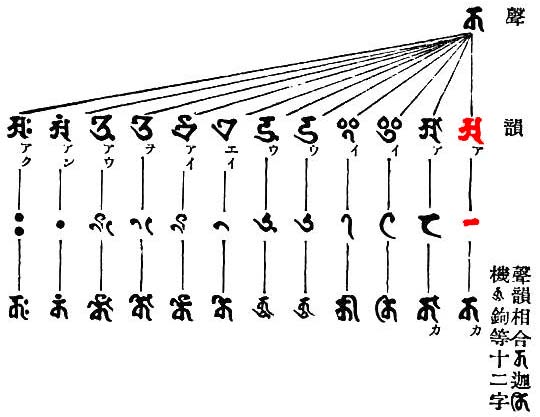The below excerpt from the Shittan Hidenki [悉曇祕傳記] (Taishō Shinshū Daizōkyō,
vol. 84, no. 270) of Shinpan [信範] shows an analysis of independent vowel letters,
their dependent forms, and the combinations of these dependent forms with the Siddham
consonant letter KA:

It also shows a horizontal stroke associated with Siddham vowel letter A that correlates
with the dependent forms of the other vowel letters. In Japanese, this stroke is known as
the ア点 a-ten “a mark” and is considered to be an elongated form of the 命点
myō-ten “life mark”. The myō-ten is the initial brush stroke used in the writing
of all Siddham letters. The a-ten is produced by extending the myō-ten to the right.
It is not a true vowel sign; it is the headstroke of each consonant letter.
My hunch is that the concept of the a-ten was developed by Japanese
scholars as a way of explaining
the inherent vowel /a/ possessed by every consonant letter. All Indic vowels
have both independent and dependent forms, except for the letter A, which has only an
independent form. The a-ten raises several philosophical questions regarding the
sound and forms of letters: How does one capture this inherent sound, which is part of the
phonetic identity of each consonant letter, but which is graphically unmarked? Is it contained
somehow in the letter form? If so, where in the glyph does it reside? As it represents the
initial brush stroke used for writing the vowel letter A, it may be said to contain the graphical
and phonetic essence of the letter.
I raise the matter of the Siddham myō-ten
and a-ten because it is significant from an ideographic perspective, as are the other
elemental strokes identified in pedagogical texts. I am
currently investigating the potential of encoding these elemental strokes, which I
mentioned in my Siddham proposal as being out of scope for the basic encoding. I
welcome any information on the myō-ten from users familiar with its philosophical
interpretations and its use in Siddham pedagogy.